
Related
Guests
- Kim NielsenProfessor of history and women’s & gender studies at the University of Wisconsin-Green Bay. She is the author of several books, including Beyond the Miracle Worker: The Remarkable Life of Anne Sullivan Macy and Her Extraordinary Friendship with Helen Keller and The Radical Lives of Helen Keller.
A bronze statue of Helen Keller was unveiled Wednesday at the US Capitol. While politicians praised Keller’s work campaigning for people with disabilities, they ignored the radical political involvement that plays another key part of her life story. Keller identified as a pacifist, socialist and member of the Industrial Workers of the World. We speak with Keller biographer Kim Nielsen. [includes rush transcript]
Transcript
JUAN GONZALEZ: A bronze statue of Helen Keller was unveiled Wednesday at the US Capitol. House Speaker Nancy Pelosi said, quote, “Helen Keller ignited a century marked by progress for people with disabilities.”
Keller was born in 1880 in Alabama. She lost her sight and hearing before her second birthday. But with the help of her teacher, Annie Sullivan, Keller learned to communicate. During her lifetime she became a prolific author and a world-renowned advocate for people with disabilities.
On Wednesday, politicians praised Keller for campaigning for people with disabilities, for racial equality and for the rights of women. But they ignored another part of Helen Keller’s story: her radical political leanings. She identified as a pacifist, socialist and member of the IWW, the Industrial Workers of the World.
To talk more about this often forgotten side of Helen Keller, we’re joined by Kim Nielsen. She’s a professor at the University of Wisconsin-Green Bay and the author or editor of several books on Helen Keller, including The Radical Lives of Helen Keller.
Kim Nielsen, welcome to Democracy Now!
KIM NIELSEN: Thank you. Good morning.
JUAN GONZALEZ: Can you tell us about this other side of Helen Keller that most Americans probably are not aware of?
KIM NIELSEN: Sure. Helen Keller was an incredibly active, political, passionate woman. She became involved in politics very early as an adult and continued throughout the rest of her life. Once she was finished with college, she became incredibly concerned about economic inequalities, as you said, joined the Socialist Party, affiliated with the IWW, became a suffragist on behalf of women’s suffrage. She sought to educate women about venereal disease, a very taboo topic at that time, and continued similarly the rest of her life.
JUAN GONZALEZ: How did she get involved in the radical movement initially?
KIM NIELSEN: Well, in college, she read a lot. She went to Radcliffe, which was the female counterpart of Harvard at the time. And some of her professors — she also made friends with a man named John Macy, who became the husband of her teacher. And she toured. She talked to people. She became interested because she cared and because she was very passionate.
JUAN GONZALEZ: She wrote some essays, including “Why I Am a Socialist,” and laying out her viewpoints on her political — her adopted political views?
KIM NIELSEN: She did. She wrote the essay, as you said. She wrote quite a bit. She wrote about working conditions. She wrote about the lives of people who were poor. She wrote about living conditions. She wrote some about racial inequalities. It was incredibly frustrating to her that she had a hard time selling those things. People wanted to read about her life as a woman with a disability, particularly her life as a child with a disability. But she was able to market some of those materials. She gave speeches. She spoke at rallies. She did as much as she could. And then, in the Teens, she went on the vaudeville and the Chautauqua circuit and spoke quite a bit there about socialism, about war. She spoke out against World War I as a pacifist. She critiqued it as a money-making venture for industrialists. And she gathered great crowds wherever she went.
JUAN GONZALEZ: This statue that was unveiled of hers of her as a, I think it was, a seven-year-old girl or as young girl, learning — at the moment that she discovered how words had meaning, could you talk about that?
KIM NIELSEN: Yes, yes. You know, I haven’t seen the statue in person. It was just unveiled yesterday. The pictures I’ve seen, it certainly looks like a beautiful statue. What’s striking to me is that Keller lived to be eighty-eight years old, and we remember her primarily right now as a seven-year-old. And I don’t know about you, but when I get to be eighty-eight, I don’t want to be remembered for what I did as a seven-year-old. But, you know, it certainly is a beautiful statue. I think it’s important to have a statue of someone with a disability in the Capitol, someone recognized as a person with a disability. But we tend, as a culture, to infantilize people with disabilities. And Keller was always really frustrated that people only wanted to hear about her life as someone with a disability. But that was a very important moment in her life. And she cared quite a bit for her teacher, Anne Sullivan Macy. And she valued Anne Sullivan Macy and what Macy had done. But, you know, she did go on to have a very active adult life, and she really wanted to be remembered for that.
JUAN GONZALEZ: What about her involvement with the Wobblies, the International Workers of the World? What did she do?
KIM NIELSEN: Let’s see. My earpiece has just fallen out here.
JUAN GONZALEZ: OK.
KIM NIELSEN: Could you say that one more time, please?
JUAN GONZALEZ: Sure. I asked you about her involvement with the Wobblies, the International Workers of the World. What exactly did she do —-
KIM NIELSEN: Sure.
JUAN GONZALEZ: —- as a member of that organization?
KIM NIELSEN: Sure. Well, she — Keller loved public events, and she was a prime extrovert, I guess. And she had — went to meetings, certainly. She spoke at rallies, particularly rallies of striking female workers in New England, and raised money for them. She gave money of her own. She publicized and wrote about giving money, so that she would draw attention to the needs of the workers there. That was very important to her.
JUAN GONZALEZ: And, of course, her involvement in the feminist movement and the battle over women’s rights to vote, but at the same time she was critical of the — of just seeing democracy as exercising that right to vote.
KIM NIELSEN: Yes, she was very interested in women’s rights and suffrage and worked on behalf of that in the Teens, nineteen-teens. She was affiliated with the National Women’s Party and Alice Paul, sort of the radical arm of the suffrage movement, and was picketing the White House. She encouraged women to vote in the 1920s. She felt that voting was important, but, as you said, not all. When she traveled post-World War II, she traveled over fifty countries around the globe and always visited women’s organizations there, feminist organizations in the countries to which she traveled. She sought to encourage women in those countries to vote, particularly in countries where women could not vote. She encouraged women’s employment, women’s education and, as I said, women’s education about their bodies and physical illness, venereal disease, support for women in prenatal care. Those were always very important issues to her.
JUAN GONZALEZ: Tell as a little bit about her life. How did she grow up and how did she learn to speak?
KIM NIELSEN: Well, Keller grew up in Tuscumbia, Alabama. Her parents were relatively well-off, not quite as well-off after the Civil War as they wanted to be. They were devastated by the war. But she grew up there.
Very early, when she was seven, Anne Sullivan Macy came to Tuscumbia, Alabama to teach her. I talk about this in my new book, Beyond the Miracle Worker. And Macy and she became tremendous friends. Macy was a very successful educator with Keller and taught her signed language. Keller had used some signs to communicate before Macy arrived, her teacher, Anne Sullivan. But Keller just grew exponentially with her education once Anne Sullivan Macy arrived, and then largely lived up in New England around Boston and Perkins School for the Blind for a while in New York. And then she and Macy stayed together the rest of Macy’s life, largely, however, living in New England, but they traveled extensively internationally.
Keller was always involved in international politics. But she lived a very active public life. She loved to read. She loved to talk with people. She loved to eat with people, have dinner with people. She loved to travel to new places. To me, she lived one of the most energetic, amazing lives there was.
JUAN GONZALEZ: Did she ever marry in later life or have children?
KIM NIELSEN: She did not marry. She once applied for a marriage license. She fell in love with a man named Peter Fagan in the late Teens. And this was a period of time where eugenics was very strong. Many felt that women particularly with disabilities should not marry, should not have children. And Keller became engaged to Fagan, contrary to the wishes of and the knowledge of everyone in her family and her friends. And once it became public news that she had gotten a marriage license, the paparazzi of the time got a hold of this. It hit the newspaper very big, and Peter Fagan was, in essence, chased out of Keller’s life.
Her family was not pleased about this at all. Much of the public were questioning. This was a time of great difficulty in Anne Sullivan Macy’s life, as well. And Keller left the relationship. And I think that was very hard for her. She didn’t write that much about that the rest of her life. She left that topic alone and didn’t leave me, as a historian, the juicy letter I wanted. But she did have that romantic relationship.
She always had a great deal of friends the rest of her life and, you know, loved to eat with them, as I said, to travel with them. She was a dear friend of Jo Davidson, who was a political activist and sculptor after World War II, and talked with him extensively about progressive politics. But she always remained as passionate and interested in friends and travel for the rest of her life.
JUAN GONZALEZ: Well, Kim Nielsen, professor of history and women’s and gender studies at the University of Wisconsin-Green Bay, I’d like to thank you for being with us on this week when, in Congress, a new statue of Helen Keller was unveiled in the Capitol.

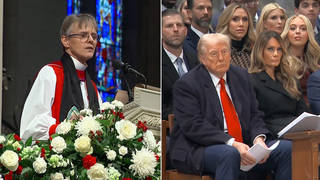

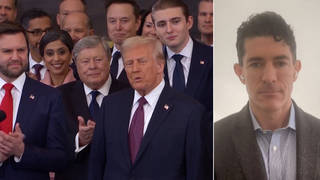
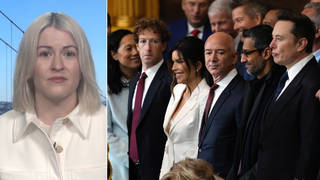





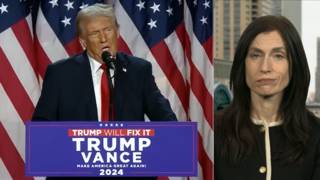
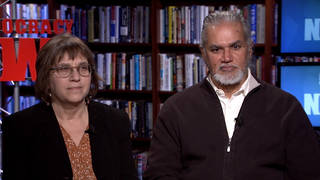
Media Options